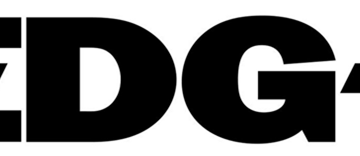Andrew Blum
2025-06-19 06:00:00
www.technologyreview.com
Following the unanimous approval by Lancaster County commissioners of a 304-megawatt solar plant outside Lincoln, one of the largest in the state, local opponents appealed. The project’s developer, the Florida-based behemoth NextEra Energy Resources, made news in March when its CEO both praised the Trump administration’s policy and insisted that solar and storage remained the fastest path to increasing the energy supply.

TERRY RATZLAFF
Nebraska is, after all, a red state, where only an estimated 66% of adults think global warming is happening, according to a survey from the Yale Program on Climate Change Communication. President Trump won almost 60% of the vote statewide, though only 47% of the vote in Lancaster County—a purple dot in a sea of red.
“There are no simple answers,” Anyanwu says, with characteristic measure. “In our industry there’s a lot of people trying to win an ideological debate, and they insist on that debate being binary. And I think it should be pretty clear to most of us—if we’re being intellectually honest about this—that there isn’t a binary answer to anything.”
The new technical frontier
What there are, are questions. The most intractable of them—how to add capacity without raising costs or carbon emissions—came to a head for LES starting in April 2024. Like almost all utilities in the US, LES relies on an independent RTO, or regional transmission organization, to ensure reliability by balancing supply and demand and to run an electricity market (among other roles). The principle is that when the utilities on the grid pool both their load and their generation, everyone benefits—in terms of both reliability and economic efficiency. “Think of the market like a potluck,” Anyanwu says. “Everyone is supposed to bring enough food to feed their own family—but the compact is not that their family eats the food.” Each utility must come to the market with enough capacity to serve its peak loads, even as the electrons are all pooled together in a feast that can feed many. (The bigger the grid, the more easily it absorbs small fluctuations or failures.)
But today, everyone is hungrier. And the oven doesn’t always work. In an era when the only real variable was whether power plants were switched on or off, determining capacity was relatively straightforward: A 164-megawatt gas or coal plant could, with reasonable reliability, be expected to produce 164 megawatts of power. Wind and solar break that model, even though they run without fuel costs (or carbon emissions). “Resource adequacy,” as the industry calls it, is a wildly complex game of averages and expectations, which are calculated around the seasonal peaks when a utility has the highest load. On those record-breaking days, keeping the lights on requires every power plant to show up and turn on. But solar and wind don’t work that way. The summer peak could be a day when it’s cloudy and calm; the winter peak will definitely be a day when the sun sets early. Coal and gas plants are not without their own reliability challenges. They frequently go offline for maintenance. And—especially in winter—the system of underground pipelines that supply gas is at risk of freezing and cannot always keep up with the stacked demand from home heating customers and big power plants.
Politics had suddenly become beside the point; the new goal was to keep the lights—and the AI data centers—on.
Faced with a rapidly changing mix of generation resources, the Southwest Power Pool (SPP), the RTO responsible for a big swath of the country including Nebraska, decided that prudence should reign. In August 2024, SPP changed its “accreditations”—the expectation for how much electricity each power plant, of every type, could be counted on to contribute on those peak days. Everything would be graded on a curve. If your gas plant had a tendency to break, it would be worth less. If you had a ton of wind, it would count more for the winter peak (when it’s windier) than for the summer. If you had solar, it would count more in summer (when the days are longer and brighter) than in winter.
Upgrade your audio game with the Logitech for Creators Blue Yeti USB Microphone. With over 33,730 ratings and an impressive 4.6 out of 5 stars, it’s no wonder this is an Amazon’s Choice product. Recently, 5K+ units were purchased in the past month.
Available in five stunning colors: Teal, Silver, Pink Dawn, Midnight Blue, and Blackout, this microphone is perfect for creators looking to produce exceptional audio. Priced at only $84.99, it’s a deal you can’t afford to miss.
Elevate your recordings with clear broadcast-quality sound and explore your creativity with enhanced effects, advanced modulation, and HD audio samples. Order now for just $84.99 on Amazon!
Help Power Techcratic’s Future – Scan To Support
If Techcratic’s content and insights have helped you, consider giving back by supporting the platform with crypto. Every contribution makes a difference, whether it’s for high-quality content, server maintenance, or future updates. Techcratic is constantly evolving, and your support helps drive that progress.
As a solo operator who wears all the hats, creating content, managing the tech, and running the site, your support allows me to stay focused on delivering valuable resources. Your support keeps everything running smoothly and enables me to continue creating the content you love. I’m deeply grateful for your support, it truly means the world to me! Thank you!
|
BITCOIN
bc1qlszw7elx2qahjwvaryh0tkgg8y68enw30gpvge Scan the QR code with your crypto wallet app |
|
DOGECOIN
D64GwvvYQxFXYyan3oQCrmWfidf6T3JpBA Scan the QR code with your crypto wallet app |
|
ETHEREUM
0xe9BC980DF3d985730dA827996B43E4A62CCBAA7a Scan the QR code with your crypto wallet app |
Please read the Privacy and Security Disclaimer on how Techcratic handles your support.
Disclaimer: As an Amazon Associate, Techcratic may earn from qualifying purchases.








































































































